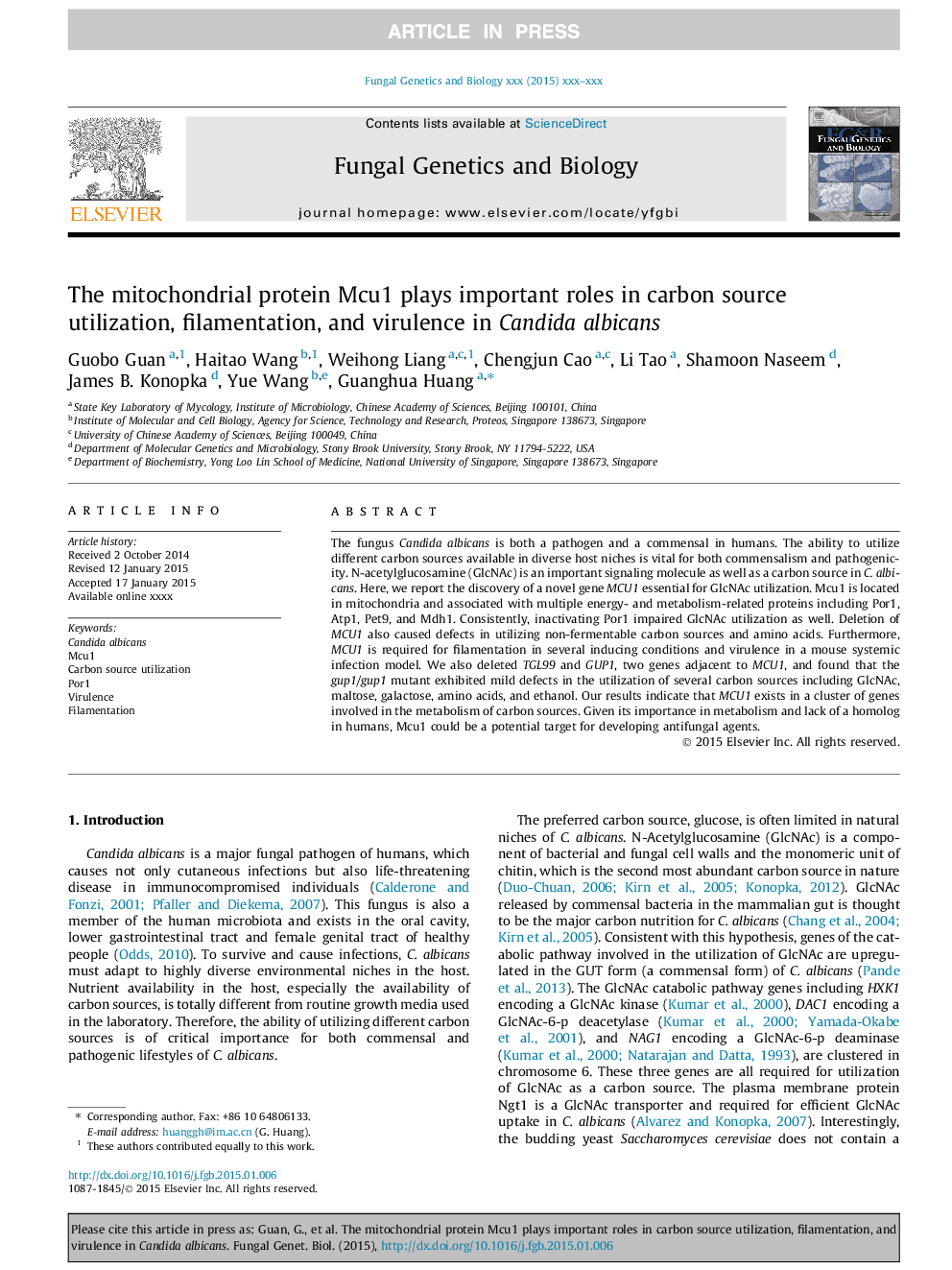| Article ID | Journal | Published Year | Pages | File Type |
|---|---|---|---|---|
| 8470680 | Fungal Genetics and Biology | 2015 | 10 Pages |
Abstract
The fungus Candida albicans is both a pathogen and a commensal in humans. The ability to utilize different carbon sources available in diverse host niches is vital for both commensalism and pathogenicity. N-acetylglucosamine (GlcNAc) is an important signaling molecule as well as a carbon source in C. albicans. Here, we report the discovery of a novel gene MCU1 essential for GlcNAc utilization. Mcu1 is located in mitochondria and associated with multiple energy- and metabolism-related proteins including Por1, Atp1, Pet9, and Mdh1. Consistently, inactivating Por1 impaired GlcNAc utilization as well. Deletion of MCU1 also caused defects in utilizing non-fermentable carbon sources and amino acids. Furthermore, MCU1 is required for filamentation in several inducing conditions and virulence in a mouse systemic infection model. We also deleted TGL99 and GUP1, two genes adjacent to MCU1, and found that the gup1/gup1 mutant exhibited mild defects in the utilization of several carbon sources including GlcNAc, maltose, galactose, amino acids, and ethanol. Our results indicate that MCU1 exists in a cluster of genes involved in the metabolism of carbon sources. Given its importance in metabolism and lack of a homolog in humans, Mcu1 could be a potential target for developing antifungal agents.
Related Topics
Life Sciences
Biochemistry, Genetics and Molecular Biology
Cell Biology
Authors
Guobo Guan, Haitao Wang, Weihong Liang, Chengjun Cao, Li Tao, Shamoon Naseem, James B. Konopka, Yue Wang, Guanghua Huang,
